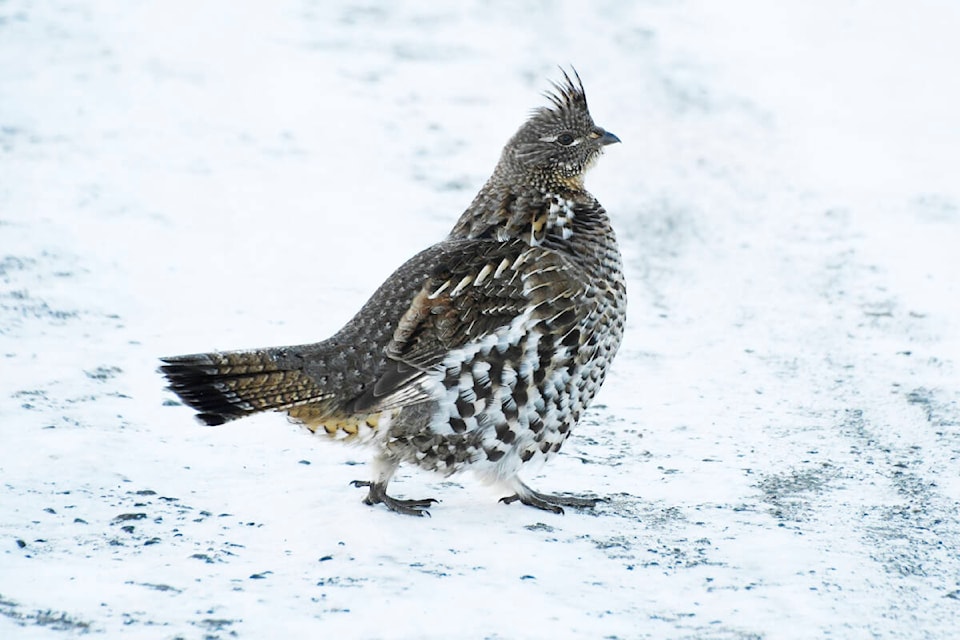The Williams Lake Field Naturalists hosted their 55th annual Christmas bird count on Sunday, Dec. 18.
The wind chill made for unpleasant conditions for counters in the field, particularly when handling binoculars with temperatures in the mid-minus 20’s and winds holding steady at 10-15 km/hr.
The only open water to be found apart from a few postage stamp riffles through the river ice was at the sewage lagoons where the few remaining ducks took refuge.
Despite the less than favourable weather, there was a good turnout of participants with 34 counters in the field and another 18 reporting from their bird feeders.
Conditions were difficult for birds and counters alike and not surprisingly numbers were down.
Found on the day were 4,341 birds of 46 different species. The total number of birds was only 300 below the average in recent years, while the species total was seven below the average of 53.
There were no new species this year and only the Ruffed Grouse was seen in record numbers with 19 counted, handily beating the previous high count of 11 set in 1977.
Very few other birds were seen in above normal numbers; the Dark-eyed Junco with 444, which was their third best total, while Red Crossbills and Pine Siskins fared well, taking advantage of the good Douglas fir cone crop, with 222 and 381 respectively.
On the other end of the scale, Chickadee numbers, both Mountain and Black-capped, plummeted to their lowest numbers in 30-40 years. The 118 Black-capped Chickadees was the lowest number since 1983 while the 66 Mountain Chickadees was the fewest since 1994.
Reasons for this decrease are unclear. There were concerns expressed by local birders in the fall at the scarcity of chickadees and it’s unlikely that the current cold weather was a major factor in the decline of these hardy little birds.
Absent this year were two of the irruptive northern forest species; the Pine Grosbeak and the Common Redpoll, which can show up in high numbers in winter, or not appear at all.
Another winter visitor from the boreal forest, the Bohemian Waxwing which showed up in record numbers last year, was still the most numerous single species with 751 counted, but well short of last year’s astronomical 4,889.
Many thanks to the counters in the field, particularly those who travelled from out of town, and those who called in the numbers from their bird feeders.
Read more: 55th Annual Williams Lake Christmas Bird Count Sunday, Dec. 18
Read more: History of Scout Island Nature Centre explored
ruth.lloyd@wltribune.com
Like us on Facebook and follow us on Twitter
